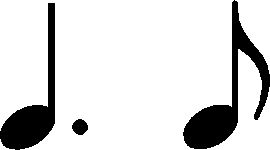



Rhythm
|
b. 1
|
composition: Op. 2, Variations, complete
category imprint: Differences between sources; Corrections & alterations issues: Changes of metre , 4/4 or 2/2 |
|||||
|
b. 8
|
composition: Op. 2, Variations, complete
..
The version in which the last f1 of the upper voice is a quaver comes from the later of the two versions of the orchestral introduction recorded in #ApI – see bars 1-8. This is a holdover from the earlier version that ends with the motif g1-f1 in the category imprint: Differences between sources; Corrections & alterations |
|||||
|
b. 9
|
composition: Op. 2, Variations, complete
..
The version with the quaver b category imprint: Differences between sources; Corrections & alterations issues: Main-line changes |
|||||
|
b. 11
|
composition: Op. 2, Variations, complete
category imprint: Differences between sources; Corrections & alterations |
|||||
|
b. 14
|
composition: Op. 2, Variations, complete
..
The b2 note, provided with a ten., is prolonged to a crotchet in A (→GE→FE,EE). It seems to be Chopin's mistake, since such a long value would have to be held also at the beginning of the 2nd half of the bar, which would certainly be a mistake. To avoid doubts, we change it to a quaver, almost exactly corresponding to its actual length. The fact that FESB omitted that extension could have resulted from that erroneous notation, with which the engraver did not know what to do. category imprint: Interpretations within context; Differences between sources issues: Rhythmic errors , Errors of A , FE revisions |

 in
in  in remaining sources
in remaining sources rhythm. In the main text we provide the final version of
rhythm. In the main text we provide the final version of  1, no grace notes in
1, no grace notes in